Medically Reviewed by: Dr. Kedar Patnekar (MBBS, D.N.B, D.C.H, Specialist Pediatrician) Dubai, UAE.
-
Author: Amar Kirale
- >> Post Created: May 19, 2022
- >> Last Updated: April 27, 2024
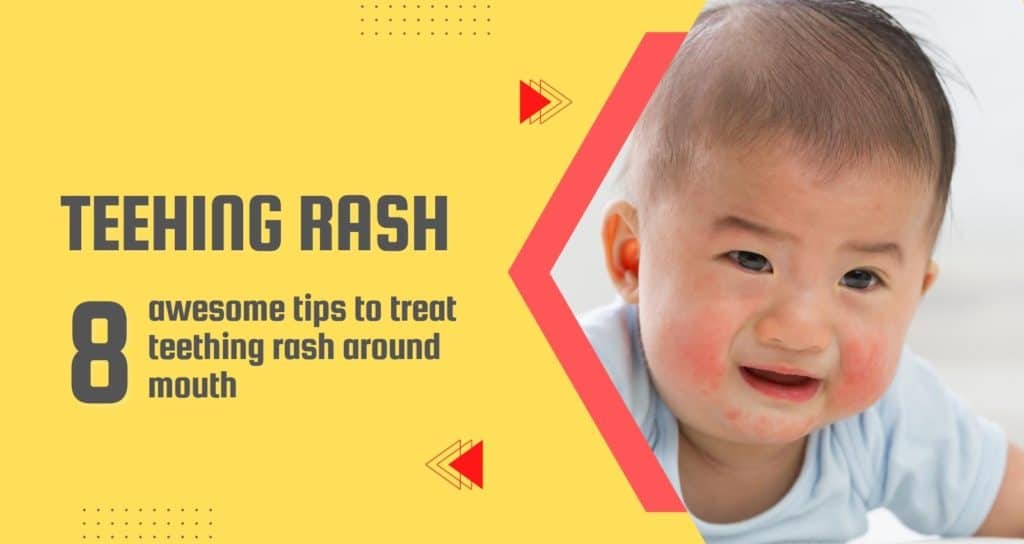
Teething Rash on Face - Table of Contents
Your baby’s first word, the first giggle, the first step – all of your baby’s ‘firsts’ are precious and filled with joy. However, every time your baby’s tooth eruption is just around the corner, the short-term pain overshadows the joy.
The discomfort, the crankiness, and other issues that come along with teething not only bother the baby, but can also take a toll on you as a parent.
In this article, we intend to discuss one of the most common problems that babies face while teething – the teething rash or also referred to as drool rash – and how to identify, treat, and even prevent it.
Understanding Teething
Teething is one of the most vital, but painful stages in a baby’s life. It is the time when teeth start popping out from the gums in the baby’s mouth.
Before eruption, when a tooth moves under the surface of the gums, it makes the gums sensitive, causes redness, and even swelling in the gum tissues.
Larger teeth like the molars can cause extra pain as it requires a larger area to erupt.
By the time the baby turns two, they have developed 20 teeth already. And every time a tooth is going to erupt, the baby goes through pain, discomfort, and crankiness.
However, the issues caused due to teething – like teething rashes – reduce as the baby grows.
Can teething cause a rash? Understanding Teething Rash around mouth
Sometimes parents confuse rash from teething with eczema. Teething rash is a skin rash that can be identified by red patches and small, raised bumps. It makes the baby’s skin look chapped and dry.
Teething rashes can make the first appearance as early as when the baby is 3 months old and can keep occurring till about they are 12 months old.
The drooling is usually more around the time the baby starts teething, as it triggers the developing saliva glands. It is this drool that causes teething rashes.
Rashes from teething can be found not only on the face, but also the neck and chest.
This is caused by the drool falling off on these body parts as well. Or sometimes, the baby may rub the teething rash on face and then touch another body part, where the rash will appear again, as the saliva has been transferred. This is precisely the reason for the appearance of:
- teething rash on body
- teething rash on baby belly
- teething rash on neck and so on…
Identifying Teething Rash and where does the teething rash appear?
Rashes caused due to teething or drool rashes are typically –
- Red, blotchy
- Discolored
- Raised or have small bumps
- Dry and chapped
A rash from teething or drool rash shows up mostly around the baby’s:
- Cheeks
- Lips
- chin
- neck
- Sometimes there can be teething rash on belly, chest, hands, and feet.
Teething rash in particular can be identified with the slight smell of milk or food in it (since it is caused by saliva or drool). The foul smell can be described as vinegary. Drool rashes can come and go over the weeks the child is teething.
If you notice a rash on your baby’s body, but your baby isn’t showing any other significant signs of teething, then it is probably not a teething rash. If you are unable to recognize the type of rash, consult your doctor.
What causes Teething Rash? Understanding how teething causes rashes!
Teething rash is also called ‘drool rash’ for a reason. According to its definition, ‘drooling’ is when excessive saliva flows out of the mouth unknowingly.
A baby’s saliva glands start developing in the first year itself. Now, saliva contains innumerous enzymes which aid in digestion.
As teeth begin erupting from the gums, the natural response of these glands to produce more saliva is activated giving rise to drool, as the baby still hasn’t developed the ability to swallow all the saliva.
When this saliva or drool comes in contact with the baby’s skin after falling from the mouth, it creates the perfect environment for bacteria to grow on the skin. As it contains food and digestive enzymes, the ‘drool’ may irritate the skin causing teething rash on face and neck.
Teething rash may be caused due to the drool falling on the skin directly or indirectly, i.e. if any body part that has come into contact with the baby’s saliva – like a pacifier – and then comes in contact with the skin.
Teething stimulates drooling, but not all drool rashes may be a result of teething. It is necessary that parents identify and understand the different types of rashes to treat them in a timely and effective way.
Every baby is different; therefore, there might be babies who drool more in the teething phase as compared to others. Obviously, this should not be a major concern.
Titbit
On mixing with breast milk, the drool that is caused by teething attains antibacterial properties to enhance the baby’s immune system.
Read this next
How to treat Teething Rashes? 8 Simple Tips to treat Teething Rash!
The basic logic behind curing teething rashes is keeping the baby’s skin clean and dry.
There are a few simple things you can try to help reduce the chances of a drool rash on your baby’s skin, soothe your baby’s teething rash, and also try to get rid of it sooner.
1. Manage the drool
The most important thing after a teething rash has made its appearance on the face is to try and ensure no more drool falls on it, or anywhere else on the baby’s skin.
Keep wiping off the drool gently from your baby’s skin, using soft fabrics.
Do not use force while wiping the drool and do not overdo the wiping; this may also cause irritation and dryness of the skin.
Using a bib to keep the drool from falling on the baby’s skin is also recommended. There are special bibs that are super absorbent made for this purpose.
You could also use a soft organic muslin burp cloth for cleaning the drool off baby’s skin.
2. Keep the baby’s hands away from the rash caused by teething around the mouth
As a natural instinct, babies will want to rub or scratch the rash, which can worsen it. To prevent this,
- Cut the baby’s nails short with the help of a nail clipper
- Try putting on mittens for times the baby is not distracted by other things and might touch the rashes
- You can try to keep the baby distracted with sensory toys, like the ones that glow, move around, or make noise
3. Take care of the skin
Moisturizing the skin is an effective way to sooth the inflamed skin and even create a ‘barrier’ to keep the moisture sealed in.
First clean the rashes with a gentle cleanser, dry it gently (do not rub at all) and then apply a baby moisturizer or a ‘barrier cream’ that is scent-free.
Applying coconut oil, petroleum jelly, or shea butter to seal the moisture is also a good option.
Coconut oil has worked wonderfully while treating my kids teething rash on face and has further worked effectively even on their diaper rashes. You should definitely give this home remedy a try.
You can also use Lanolin ointment on the rashes to prevent it from worsening.
4. Give something cold and chewy to gnaw on
In the teething phase, the baby’s gums are inflamed, so to soothe them, give your baby something cold (not too cold) and chewy to gnaw on.
The cold will help remove the painful sting that gums feel during teething.
For this purpose, generally babies are given
- cold pacifiers
- cold teething rings
- washcloths
- cold fruit
- popsicles
Ensure that you give them this for a limited time and the item/s are not very cold, as it can make them drool more.
Pacifiers in particular, can trap the drool between itself and the skin, and hence, aggravate the irritation of the skin and worsen the teething rash around the mouth.
5. Gum massage
One of easiest thing a parent can do to ease the gum discomfort during teething is massaging the baby’s gums gently, increasing the blood flow there, which hastens the healing process.
6. Change wet clothes
Never keep wet clothes (baby clothes, bedding, soiled diapers, anything) in contact with the baby’s skin for long, as it can give rise to rashes. Replace bibs regularly too, as the baby might touch it and spread the rashes to other areas.
7. Limit/stop using things that might irritate the skin
Detergent to wash baby’s clothes, baby soap, lotions, etc. should be free from dyes and scents, which can possibly irritate the inflamed skin further.
8. Emollient creams
Teething rashes need to be kept clean and dry, and emollient creams offer the water barrier required for this. Some emollient creams are –
- Aquaphor
- Vaseline
- Lanisoh lanolin cream
You can also use some natural products with beeswax for the same purpose.
If the teething rash around the mouth or any other part has worsened, if there is bleeding or oozing or the skin there is cracked, then show it to your doctor immediately, who may prescribe an over-the-counter hydrocortisone cream with a mild 1% formulation.
When does a teething rash need a doctor’s attention?
It is necessary that you are able to differentiate teething rashes from other rashes. Most of the rashes are not serious in nature, but it is still advisable to confirm the type of rash with your doctor.
Rashes caused by other issues can actually be measles or hand-foot-and-mouth disease.
Similarly, another type of rash that calls for immediate medical attention is Petechiae, bringing flat, red, pinpoint dots on the skin, which do not turn white on pushing. These are actually burst blood vessels.
It is necessary to see a doctor immediately if the rash –
- Gets worse suddenly
- Is accompanied by fever (especially if the baby is less than 6 months of age)
- Is cracked
- Bleeds
- Is oozing
- Is weeping fluid
A mild teething rash around the mouth is never a cause of concern. However, once confirmed with the doctor on the type of rash, the right treatment (even at home) can help it heal faster.
Also keep an eye out for an infected rash –
- It bleeds
- Has pus in it
- Cracks
- Is painful
- Is severely red
Consult a doctor for infected rashes as well.
Monitor your child’s activities and food intake, the products you use on and for the baby for a few days to tell the doctor about it. It might help them in determining the type of rash, if it isn’t a teething rash.
Frequently Asked Questions
Q1) Do any other rashes look like teething rash?
Yes, teething rashes are often confused with eczema. In eczema or atopic dermatitis too, the skin sports red, raised patches and they can appear anywhere on the body, especially the creases (behind knees, neck creases, etc.). If you are unsure about the kind of rash, consult your pediatrician.
Q2) How long does a teething rash take to heal?
With regular and appropriate treatment, a teething rash on face or anywhere should start to show improvement in a week or so.
As every case is different, it may take a little more time than that as well. However, if you see absolutely no improvement, then visit your pediatrician.
Q3) How long does teething last?
Over a period of two years, your baby will grow about 20 teeth! For one tooth to erupt, the ideal window is about 8 days. About 3 days before the eruption, the day of eruption, and another 3-4 days for the gums to settle after the eruption.
Of course, this is the process for each tooth. There is no particular timeline or gap between the eruptions of each tooth, so that cannot be determined.
However, once your baby turns into a toddler, the issue of teething rashes won’t be a problem as by then the child learns to control the drooling.
Q4) Does teething cause fever?
No, teething does not cause fever, though it might increase the body temperature (which stays under 38°C or 100.4°F), which is not considered a fever. To know more about the relation between teething and fever you can refer to our article on Teething Fever.
Conclusion
Teething rash on face or around the mouth is usually not a big cause of concern, provided you keep the baby’s skin clean and dry and follow the tips mentioned in the article above on how to take care of the teething rash on face if and when it occurs.
Drooling while teething is natural in small babies; therefore, it can’t be avoided, but the problems that can arise from it can be prevented. The key is to keep the baby and clothes clean and dry!
You can bring a lot of relief to your baby from this temporary discomfort by taking care of simple things mentioned in the article. It may seem a little exhausting, but the smile on your child’s face will be worth everything!
Happy Teething!
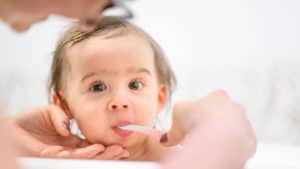



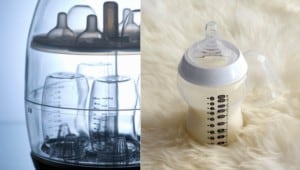

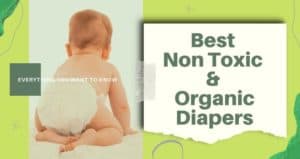



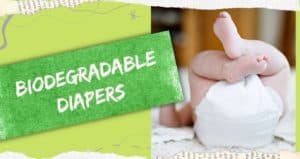


Some truly nice information on this site, likewise is the styling and features.
Best Content I Have Found Every Time On This Site, Best Of Luck.
Appreciate it for all your efforts that you have put in this. very interesting info .
Very nice post.
My 8 month son has a teething rash on face.
Thanks for the advise.
Thanks Freya.
I hope your little one recovers soon.
Fantastic site. A lot of useful information here especially on home remedies and DIY cream for diaper rash. I am sending it to a few buddies. And certainly, great job!
Thanks Paola for the encouraging words.